What did our ancestors eat for a quick snack? They'd grab a little pie or a kalach. The whole point of a kalach — bread with a handle — is to eat it "on the go." You could grab the handle with dirty hands, eat the bread, and then just throw away the dirty handle.
Kalach is a traditional bread that has been baked in Russia since about the 14th century. It was made in the shape of a castle with a pointed roof and has a relatively thin “wishbone” (handle) on one side. Local historian Vladimir Gilyarovsky in his book "Moscow and Muscovites" described a street scene of the late 19th century: "A four-in-hand gallops out of control across the square on Tverskaya and Okhotny Ryad, knocks over a barrel, and continues to fly along. A "goldsmith" [slang for a worker who hauls out sewage in barrels] flounders in a puddle of slurry spilled from one of his barrels. He seems most concerned with the kalach in his upraised arm. Kalach is his special treat. It's very convenient — you can hold it by the handle, which is much better than holding it with dirty hands.”
Rich people would toss out the handle, give it to beggars or feed it to dogs. A hungry person would eat the whole loaf together with the handle. This is the source of the expression дойти до ручки (to be at the end of his rope, literally “get to the handle”), which means to hit the bottom, to be in dire financial straits.
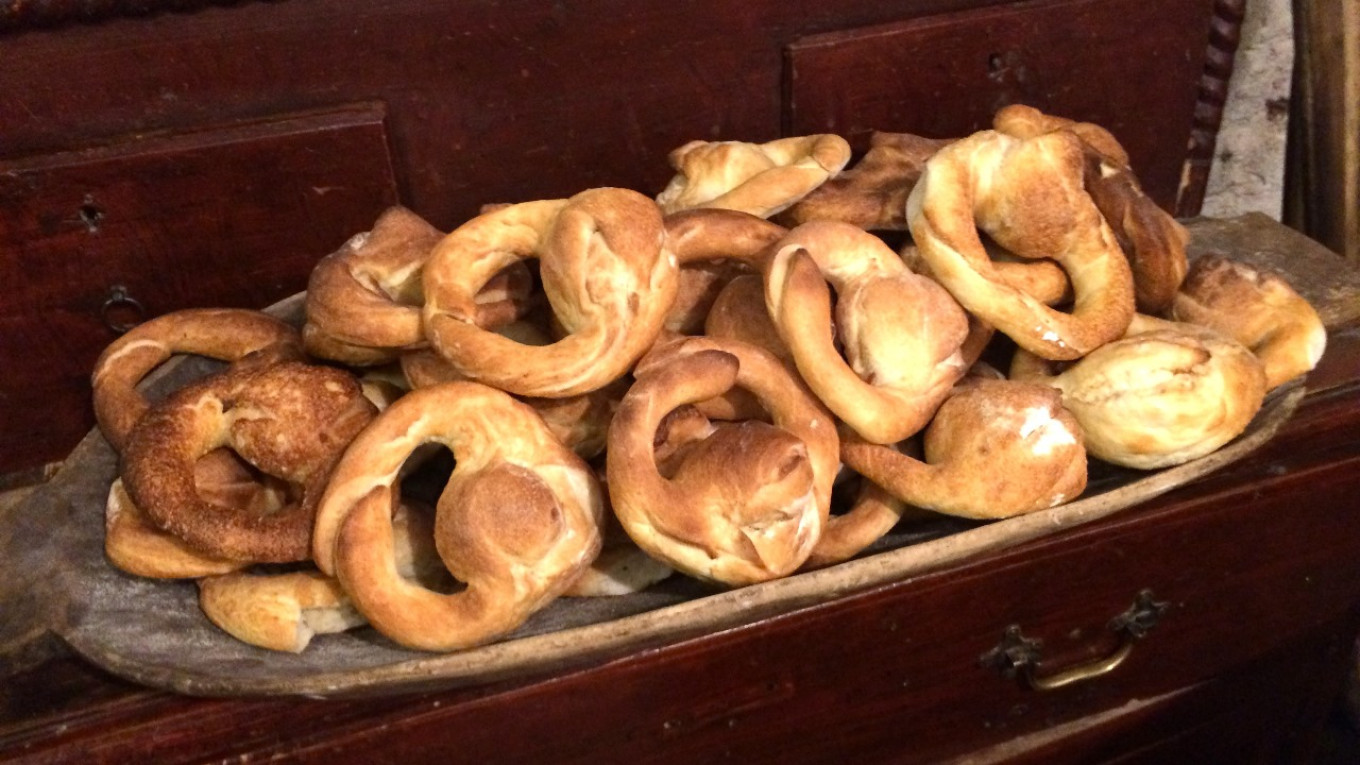
But this is only one way the phrase is interpreted. With folk expressions, there is never a certain answer. But for most of our history, kalach was an expensive bread for a festive occasion. Simple workmen couldn't treat themselves to a kalach any time they wanted. Kalach was a favorite treat at a well-to-do merchant's table. Perhaps when the merchant’s wife didn’t toss away the dry bread handle, the guests at the table realized that the family might be having trouble making ends meet or might be about to go bankrupt.
When it comes down to it, if you ask which is the most traditional Russian bread, it’s easy to answer. It’s kalach, of course. It’s just a dense white bread, but there are dozens of different stories about it. It first appeared in the Murom Principality, located on the bank of the Oka River to the east of Moscow. The kalach probably appeared as a result of adapting Tatar white bread to Russian baking practices, when rye sourdough starter was added to wheat flour. This was a simple addition: rye bread was regularly baked for the Russian table in that era, and the sourdough starter from it was preserved and passed on. It was probably used for baking a festive wheat bread, which eventually became kalach.
Below: For 10 years Kolomna (120 kilometers south of Moscow) has had a Kalach Museum where they don't just tell you about kalaches, they bake kalaches themselves.
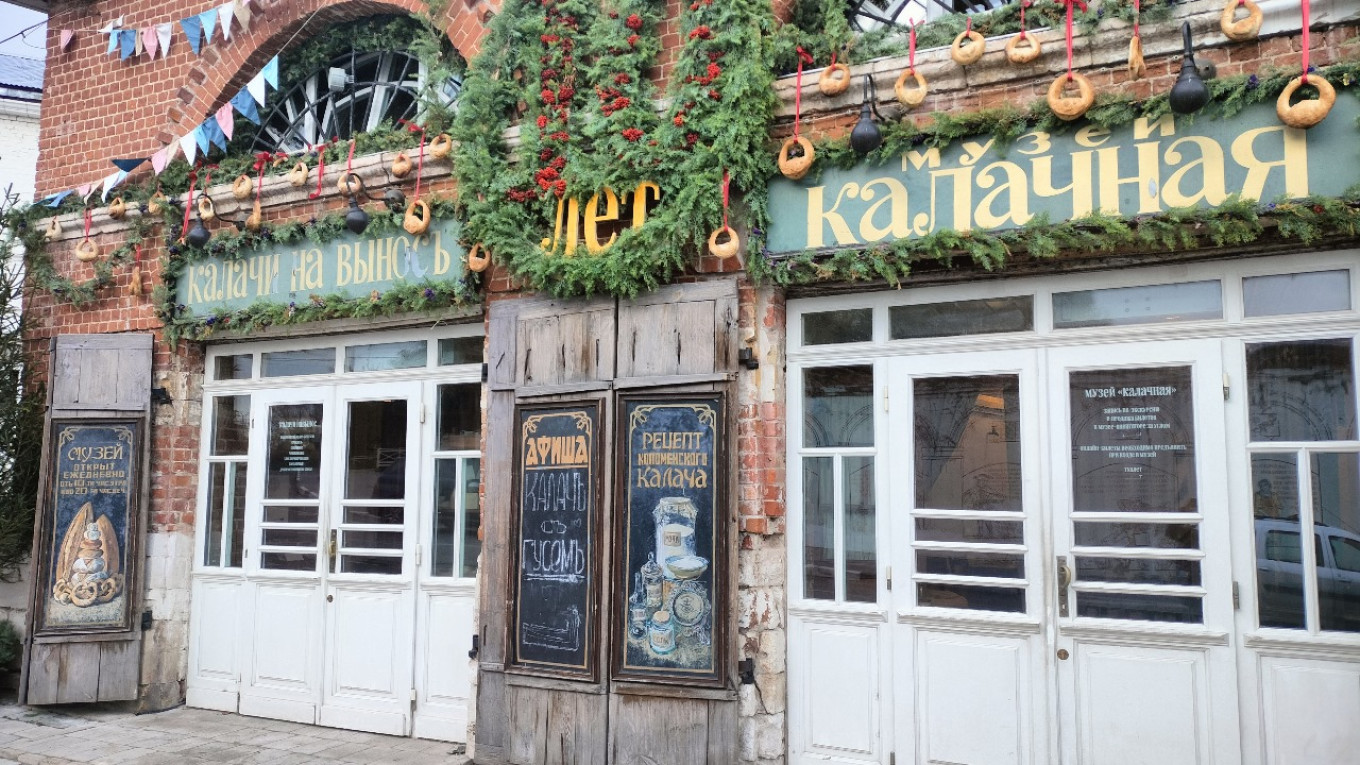
In 1239 Murom was burned to the ground when the Mongolian army attacked, and it lost its influence. Almost a century later it was annexed to the Moscow Principality that eventually grew into the Russian state. In a sense, the kalach was “inherited” by Moscow, and it flourished in the city's much larger market.
This new type of bread gradually spread throughout Russia. By 1500 Novgorod scribes mentioned that in Korela (today on the border with Finland) there were eight kalach makers among other craftsmen. In 1559 when Tsar Ivan the Terrible was at the Simonov monastery he served kalaches, fish and kvass at the funeral banquet for Prince Konstantin.
Kalaches were sometimes enormous. The 17th-century Russian author Grigory Kotoshikhin wrote that kalaches made for birthdays were “sometimes quite long, two or three arshins long and a quarter of an arshin thick" [an arshin was equal to a man's step — about 70 centimeters or 28 inches].
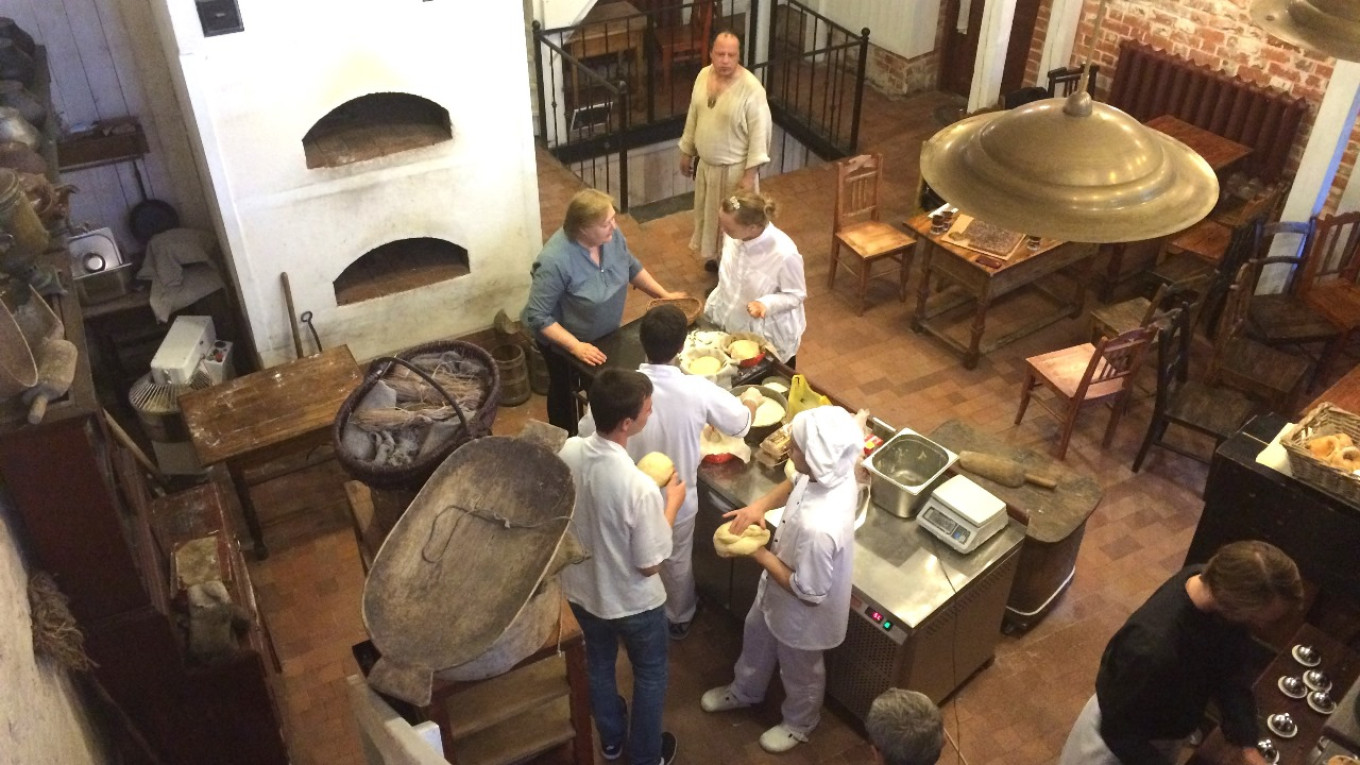
Soon different varieties of kalaches appeared. A “mixed kalach” (made from a blend of wheat and rye flour) was mentioned in a description of food sent from the tsar’s palace to the Persian Embassy in Moscow in 1615. Another kalach was called “grainy,” which meant that it was made with the best flour and had a fine texture and a nice crumb. Another kalach was called “rubbed” — based on a technique of rubbing the dough on a cold table for a long time while kneading.
Kalaches are very filling breads. They are made of fine, high-grade and very dry flour that is sifted several times before using. This kind of flour is great for baking, and dough made with it rises very high. It is also allowed to “mature,” to rise several times and be kneaded several times, too. That is why the kalaches come out so light, with a soft crust that does not even have time to brown, and with a tender and springy, pleasant crumb.
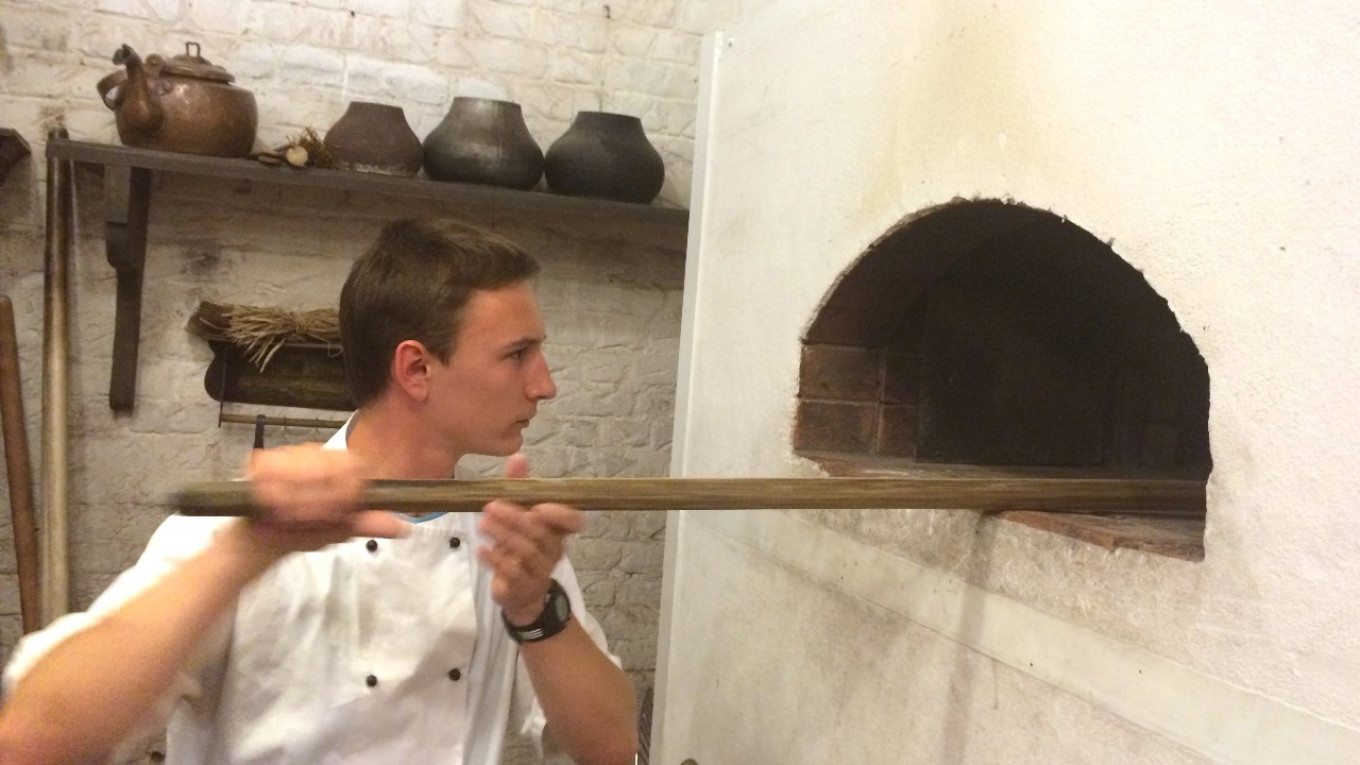
One of the unique qualities of kalach dough is that it doesn’t get stale for a long time. In the 19th century, kalaches were frozen in Moscow and brought by coach to Paris, thawed in warm towels and served as “freshly baked bread.” This was after a month or two of being frozen!
Today kalach breads are being revived in Kolomna. In the Kalach Museum visitors learn how to bake it. They will tell you what flour you need to use and why you should put ice in the drawer under the counter where the dough will be kneaded. And they learn all about baking in a real Russian stove.
You can, of course, bake a kalach in an ordinary modern oven. We make them ourselves from time to time. What is more delicious than taking a freshly baked kalach, cutting a piece of the thick end, and spreading it with duck paté?
Kalach
For 4 kalaches
Ingredients
- 450 g (just under 1 lb) highest grade flour (12-14% protein) + 80 g (about 3 oz) for dusting (sprinkling the table and dough)
- 320 g (1 ½ c) water
- 6 g (2 tsp) fresh yeast
- 8 g (1 tsp) salt
Instructions
- Dissolve the yeast and salt in the water. Add the flour and knead the dough. Transfer to a bowl, cover with cling film and leave to rise at room temperature for 4 hours.
- Punch it down and knead it every hour (3 times total).
- After the last time you punch it down and knead, put the dough in the refrigerator for 2.5 hours.
- Take the dough out of the refrigerator, punch it down and knead slightly two more times, 50-60 minutes apart.
- After 2.5 hours, take the dough out of the refrigerator and transfer it to a table sprinkled with flour.
- Heat the oven and baking tray to 250°-270°C (480-515°F)
- Divide the dough into 4 pieces and form each into a ball. Let it rest for 15 minutes.
- Form each kalach with a thick section in the middle and pointed ends.
- Overlap the ends of the kalaches and roll the joined ends with the palm of your hand. Cover and leave to proof for 30-40 minutes.
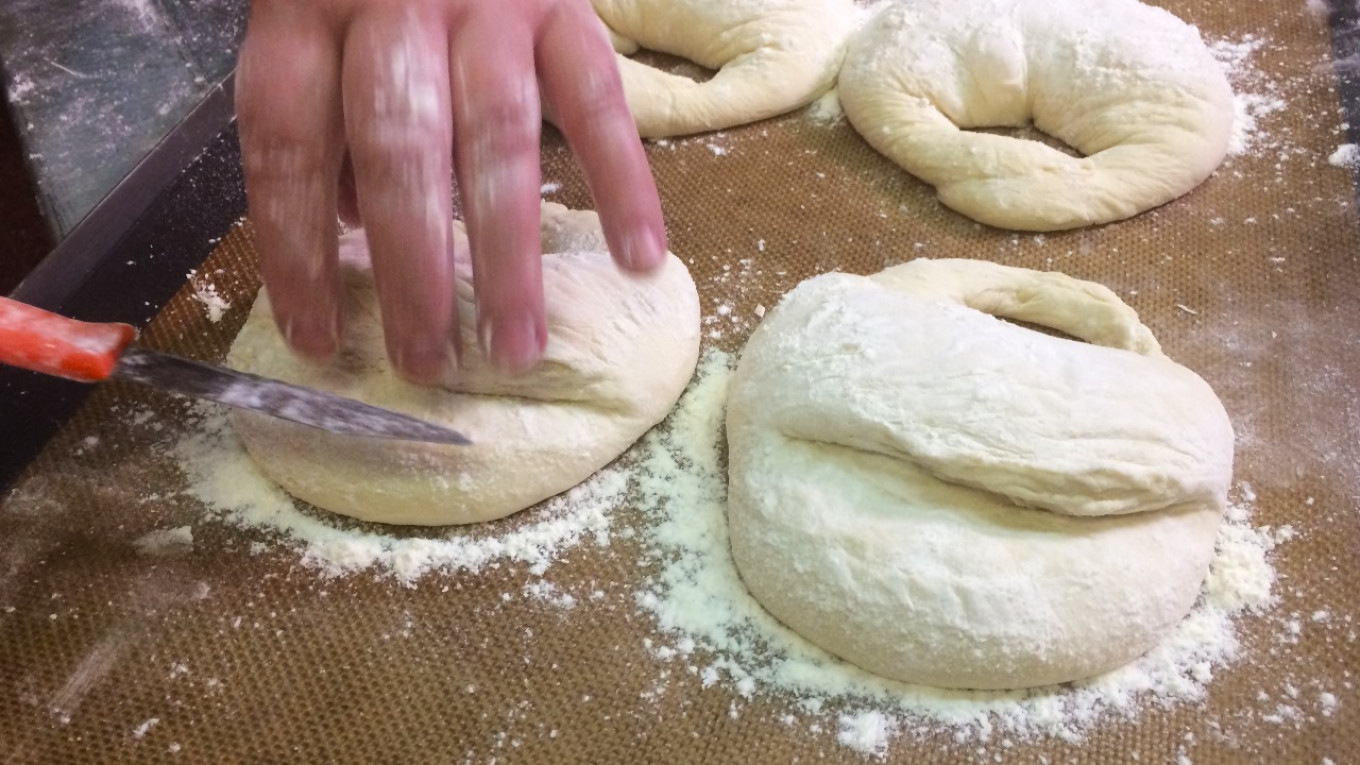
- Make a deep incision in the kalaches and sprinkle with flour. Pull back the upper part of the kalach, sprinkle the cut with flour, shake off the excess flour and fold the top back.
- Place the kalaches on baking paper and put it in the oven on the heated baking tray.
- Spray the kalaches and the oven walls with water.
- Bake the kalaches for 10-15 minutes.
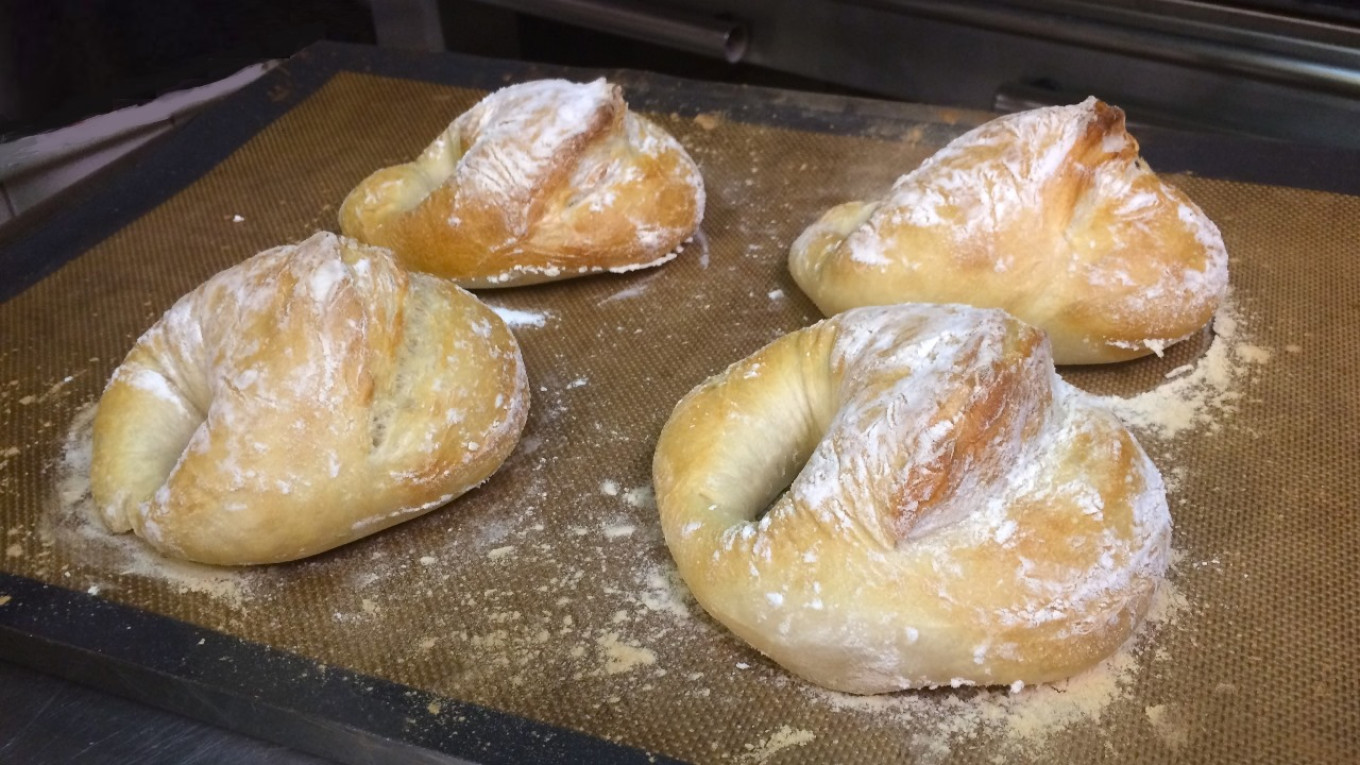
A Message from The Moscow Times:
Dear readers,
We are facing unprecedented challenges. Russia's Prosecutor General's Office has designated The Moscow Times as an "undesirable" organization, criminalizing our work and putting our staff at risk of prosecution. This follows our earlier unjust labeling as a "foreign agent."
These actions are direct attempts to silence independent journalism in Russia. The authorities claim our work "discredits the decisions of the Russian leadership." We see things differently: we strive to provide accurate, unbiased reporting on Russia.
We, the journalists of The Moscow Times, refuse to be silenced. But to continue our work, we need your help.
Your support, no matter how small, makes a world of difference. If you can, please support us monthly starting from just $2. It's quick to set up, and every contribution makes a significant impact.
By supporting The Moscow Times, you're defending open, independent journalism in the face of repression. Thank you for standing with us.
Remind me later.







